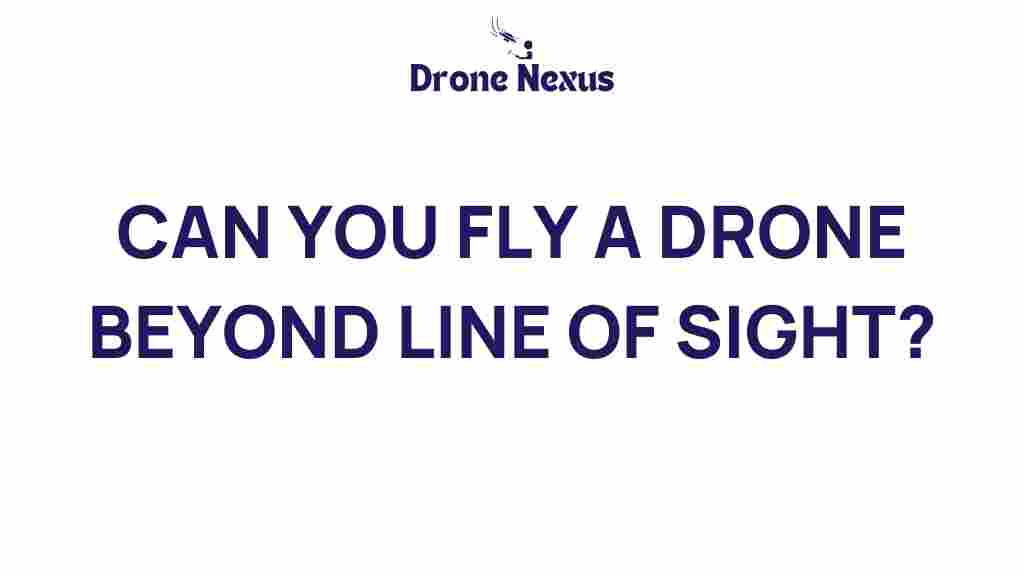Can You Fly a Drone Beyond Line of Sight? The Rules and Risks Uncovered
Drones have transformed various industries, from cinematography to agriculture, offering unprecedented aerial perspectives and operational capabilities. However, as drone technology evolves, so do the regulations surrounding its use. One of the most critical questions for drone operators is whether they can fly a drone beyond the line of sight (BVLOS). Understanding drone regulations is essential for safe and legal operations. In this article, we will explore the rules, risks, and best practices associated with flying drones beyond visual line of sight.
Understanding Drone Regulations
Before diving into BVLOS operations, it’s vital to grasp the current drone regulations. These rules are implemented by aviation authorities worldwide to ensure safety, privacy, and accountability. Here’s a breakdown of the key components:
- Registration: Most countries require drone operators to register their drones, especially if they exceed a certain weight.
- Certification: Operators may need a Remote Pilot Certificate or similar credentials, especially for commercial use.
- Altitude Limitations: Drones typically must not exceed an altitude of 400 feet above ground level.
- Restricted Zones: Flying near airports, military bases, or other sensitive areas is generally prohibited.
Non-compliance with these drone regulations can lead to severe penalties, including fines and confiscation of equipment.
The Concept of Beyond Visual Line of Sight (BVLOS)
Flying a drone beyond the visual line of sight means operating the drone at a distance where the pilot cannot see it with their naked eye. This practice is appealing for several reasons:
- Increased operational range
- Ability to cover larger areas for surveys or inspections
- Enhanced efficiency in delivery services
However, BVLOS operations also come with unique challenges and risks that must be understood before proceeding.
Current BVLOS Regulations
In many jurisdictions, BVLOS operations are subject to stringent regulations. Here’s what you need to know:
- Approval Process: Operators must typically apply for a special waiver or authorization from aviation authorities.
- Safety Protocols: Operators must demonstrate that they can maintain situational awareness and mitigate risks associated with flying out of sight.
- Technology Requirements: Enhanced technology, such as detect-and-avoid systems, is often required to ensure safety during BVLOS flights.
For example, in the United States, the Federal Aviation Administration (FAA) has established specific criteria for BVLOS operations under Part 107. Familiarizing yourself with these drone regulations is crucial for compliance.
Step-by-Step Process for BVLOS Operations
If you’re considering flying a drone BVLOS, follow these steps to ensure compliance with drone regulations:
1. Understand the Regulations
Start by reviewing the regulations set by your local aviation authority. Each country or region may have different rules regarding BVLOS operations.
2. Register Your Drone
Ensure that your drone is registered as per local laws. This often involves providing details about the drone, including its weight and purpose of use.
3. Obtain Necessary Certifications
If required, complete any training or certification programs to qualify as a remote pilot. This may include passing written and practical exams.
4. Apply for BVLOS Waiver
Prepare and submit an application for a BVLOS waiver, detailing your operational plan, safety measures, and technological capabilities.
5. Implement Safety Measures
Incorporate fail-safes and emergency protocols into your operation. This includes having a reliable communication system and a backup plan in case of equipment failure.
6. Conduct a Risk Assessment
Before flying, perform a comprehensive risk assessment, identifying potential hazards and how to mitigate them.
7. Test Flights
Conduct test flights within your visual line of sight to ensure that all systems work correctly before attempting BVLOS operations.
Risks Associated with BVLOS Operations
While flying a drone beyond line of sight can offer numerous advantages, it also comes with inherent risks. Consider the following:
- Loss of Control: Operating out of sight increases the risk of losing visual contact with the drone, which can lead to accidents.
- Collision Hazards: Without the ability to see the drone, there’s a higher chance of colliding with other aircraft or obstacles.
- Regulatory Consequences: Failing to comply with drone regulations can result in legal penalties, including fines and loss of license.
Understanding these risks is crucial to developing effective mitigation strategies.
Troubleshooting Tips for BVLOS Operations
If you encounter issues while operating a drone BVLOS, consider the following troubleshooting tips:
1. Signal Loss
If you lose control signal, ensure you have a robust communication link. Utilize drones equipped with long-range transmission systems to maintain connectivity.
2. Navigation Failures
If the drone loses its GPS signal, have a backup navigation system in place. Some drones can navigate using onboard sensors or vision systems.
3. Battery Management
Monitor battery life closely and plan your operations accordingly to avoid mid-flight power loss. Use drones with battery management systems that alert you when battery levels are low.
4. Obstacle Detection
Ensure your drone is equipped with obstacle detection sensors to prevent collisions. Regularly test these systems before flight.
Conclusion
Flying a drone beyond the visual line of sight presents exciting opportunities for innovation and efficiency; however, it comes with significant responsibilities. Understanding and adhering to drone regulations is essential for ensuring safety and legality. By following the outlined steps and being aware of the risks involved, you can successfully navigate the complexities of BVLOS operations. Whether you’re a hobbyist or a commercial operator, responsible drone use will pave the way for a thriving future in aerial technology.
For more information on drone regulations and best practices, check out this comprehensive guide. If you’re looking for detailed drone training resources, visit this site.
This article is in the category Safety and created by DroneNexus Team
